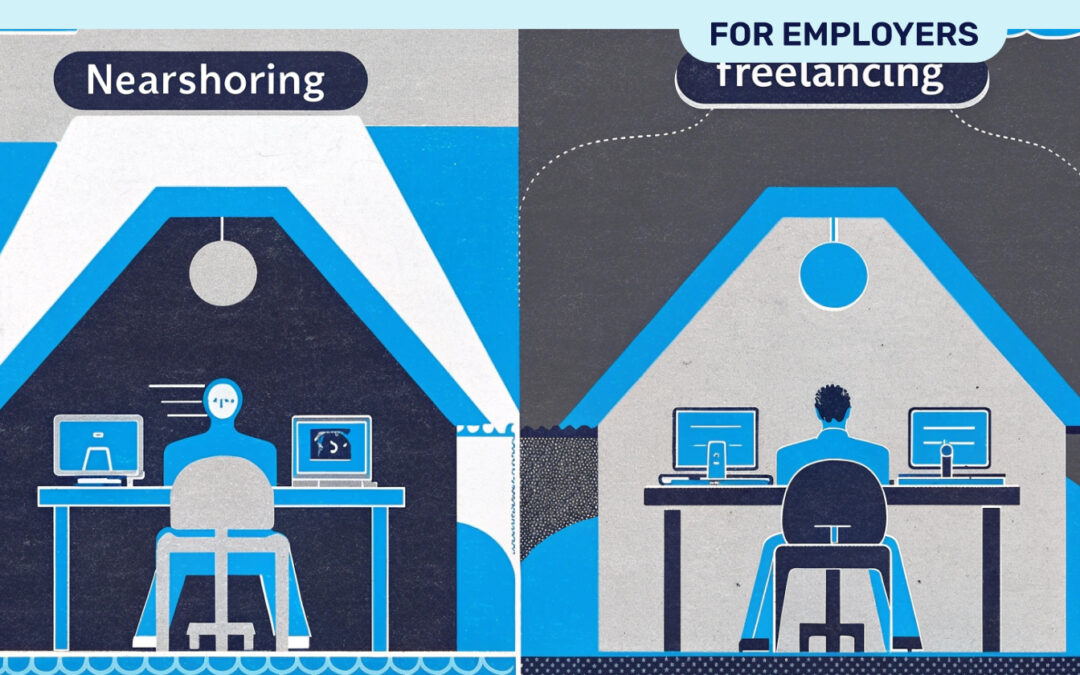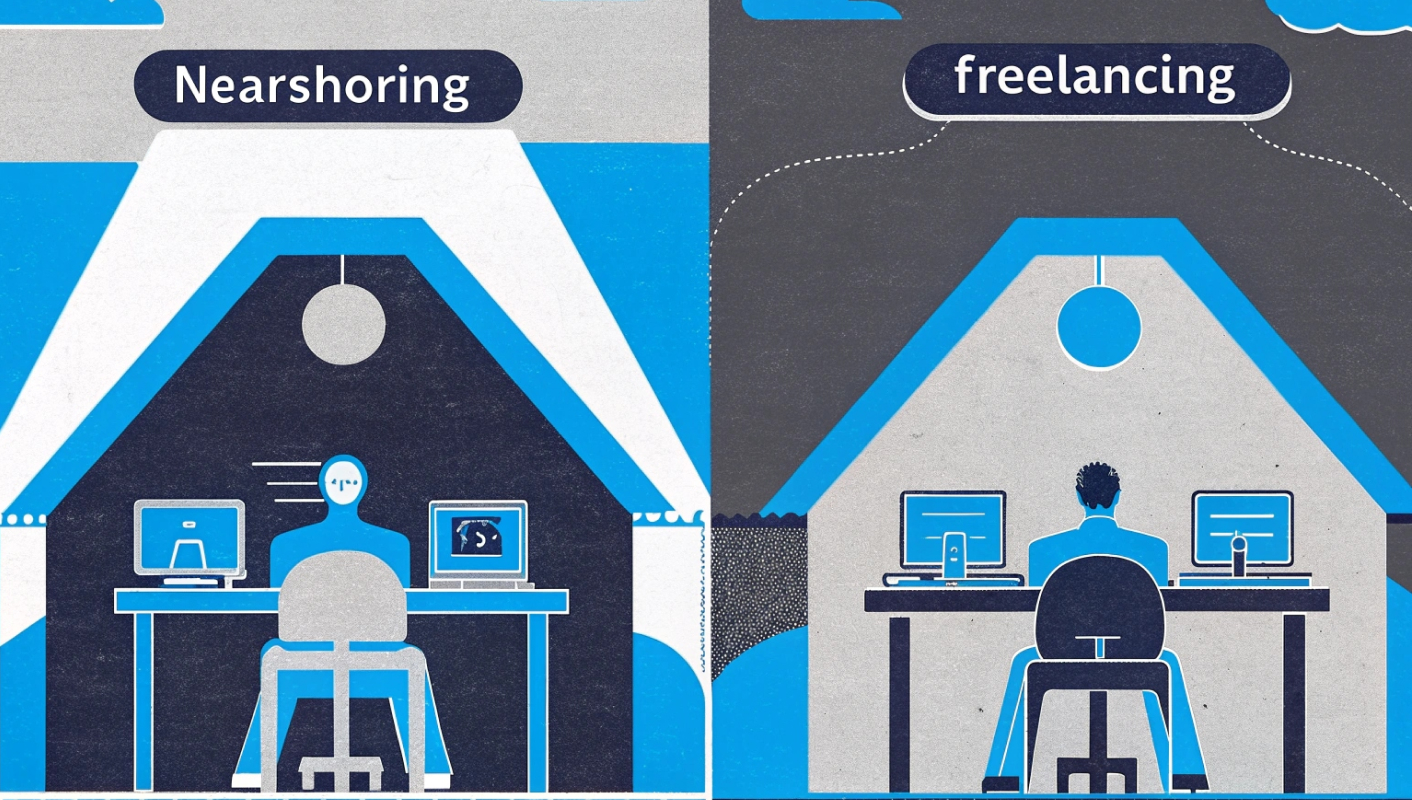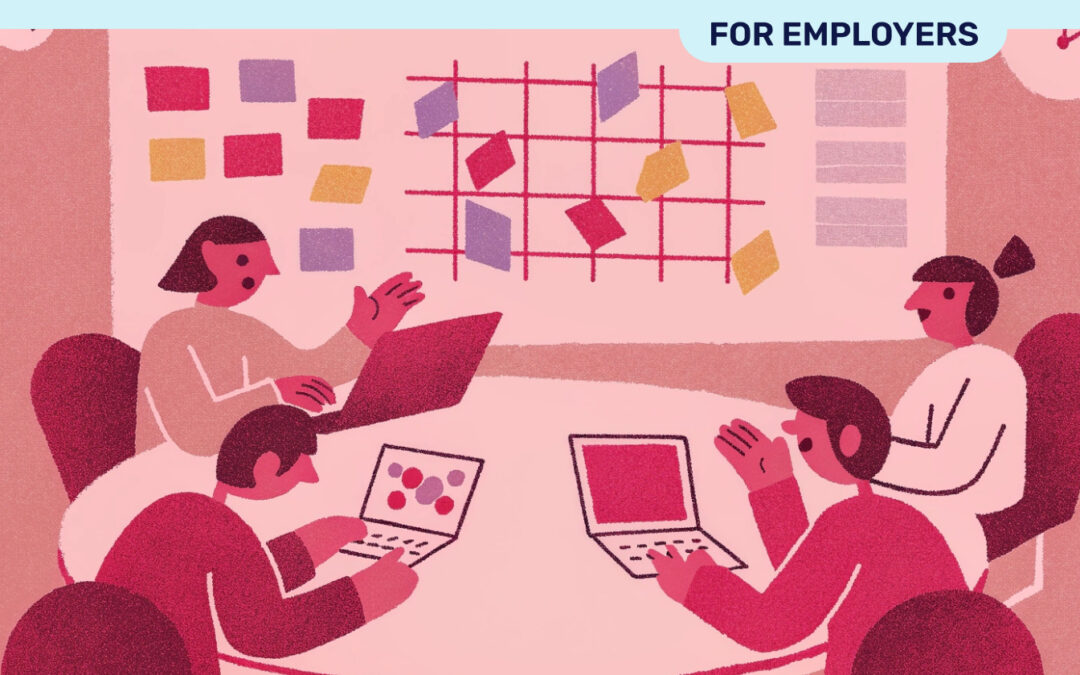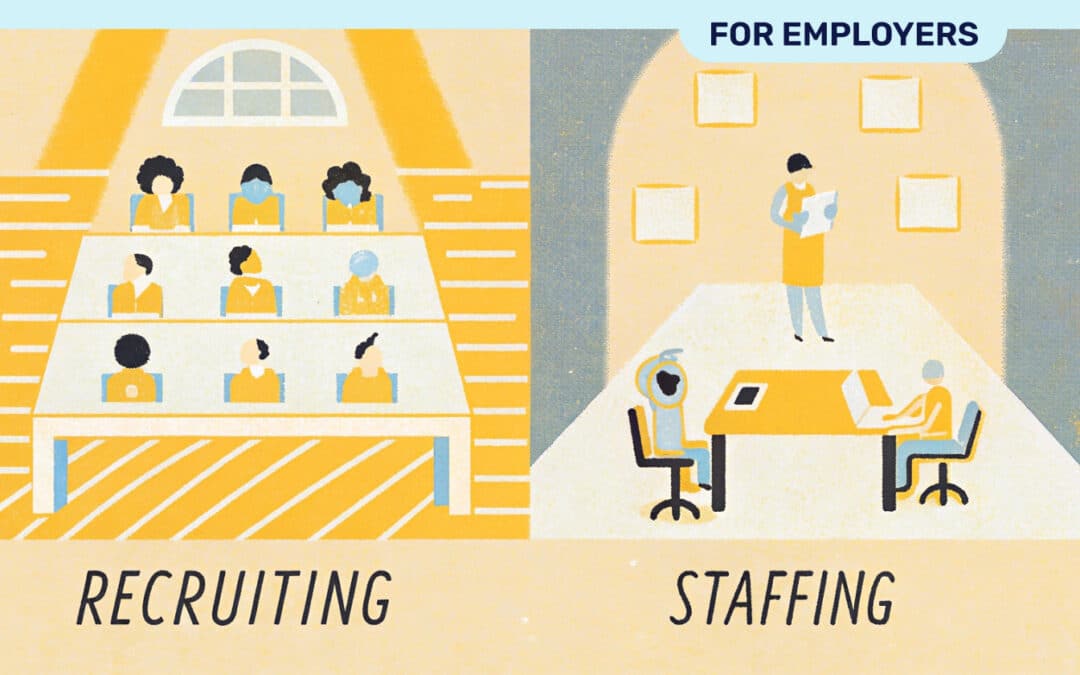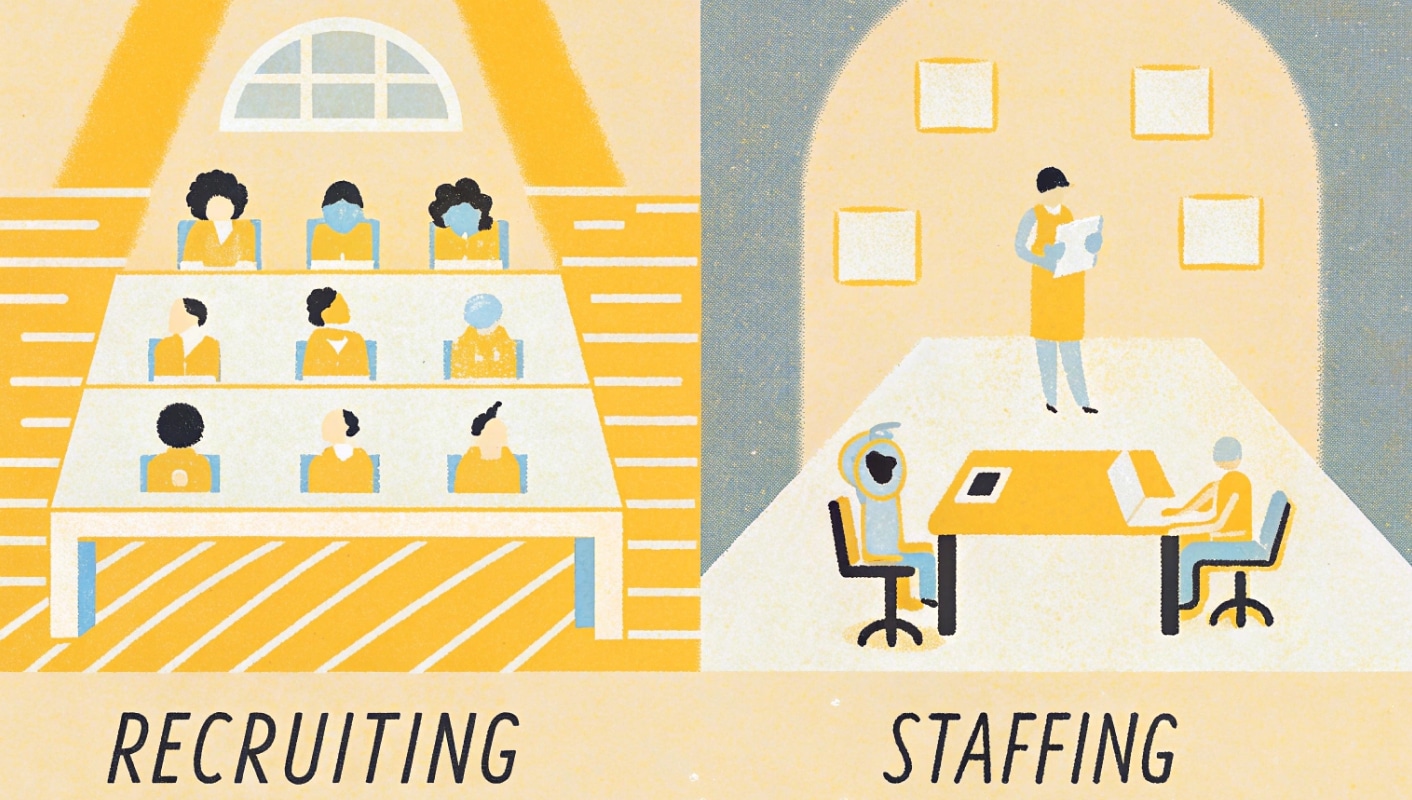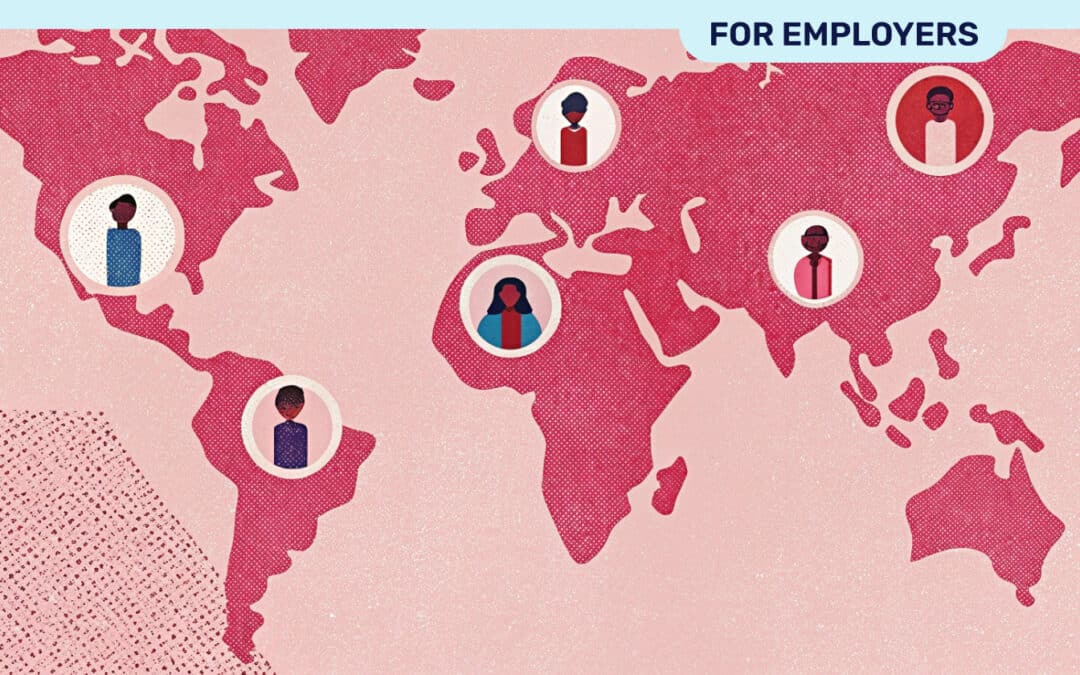
Global Hiring: How to overcome your limits and embrace success?
Global Hiring: How to overcome your limits and embrace success?

In 2025, the most successful companies aren’t just competing in local talent markets—they’re thinking globally. Global hiring expands your talent pool, reduces costs, and fuels innovation by tapping into diverse perspectives. Whether you need software developers from Colombia or customer representatives from Argentina, hiring internationally is now essential.
This guide will explain what global hiring entails, highlight its top benefits, and focus on three primary solutions:
- Contractor agreements (including long-term engagements)
- Employer of record (EOR) services
- Staffing and recruitment agencies
We’ll also sprinkle in practical pointers for hiring from Latin America, a region that’s become a go-to source for high-quality talent.
What is global hiring?
At its core, global hiring means recruiting, onboarding, paying, and managing people who live outside your home country. Unlike local recruitment, it requires navigating:
- Labor laws and compliance in each jurisdiction
- Payroll, taxes, and benefits across different currencies
- Time zone differences and communication methods
- Cultural nuances and language considerations
According to Indeed’s hiring lab, 2024 saw surprising resilience in labor markets, but signs point to potential slowdowns in 2025, making global hiring an attractive hedge against local talent shortages and economic fluctuations (hiring lab, 2025).
Why global hiring matters now
Several trends converge to make 2025 the year of borderless recruitment:
- Skill shortages and the expertise economy
- Contractor and consulting surge: Oyster’s 2025 global hiring report revealed a 46% increase in contractor engagements and a tenfold rise in consulting hires between 2023 and 2024 (Business Wire, May 30, 2025).
- Expertise economy: As budgets tighten, companies prefer on-demand experts over full-time headcount. This “expertise economy” means organizations build lean, specialized teams to tackle specific challenges.
- Cost optimization and market expansion
- Lower costs, high quality: hiring in regions like Latin America often yields 20–40% cost savings on average compared to North America or Western Europe—without compromising skill levels (itbrief asia, 2025).
- Geographic risk mitigation: Diversifying headcount across multiple regions protects against localized downturns. If one market cools, your operations continue elsewhere.
- 24/7 productivity and innovation
- Follow-the-sun model: distributed teams across LATAM, EMEA, and APAC enable work to continue around the clock. For example, an engineer in Argentina can hand off code to a QA team in U.S. a couple hours before their schedule even starts
- Diverse perspectives: global teams bring varied cultural insights, leading to more creative solutions and stronger problem-solving, key advantages in competitive industries (hr brew, June 2, 2025).
Top global hiring solutions
Contractor agreements: flexible for both short- and long-term needs
Hiring contractors—independent professionals working under a services contract—is one of the fastest ways to tap global expertise. While often seen as short-term or project-based, contractors can also be engaged for long-term and critical roles.
Why choose contractors?
- Speed and agility: You can onboard contractors in days, bypassing the months-long process of establishing a local legal entity.
- Cost control: no payroll taxes, mandatory benefits, or office overhead. You can negotiate payment agreements with more flexibility
Long-term contractor engagements
- Stable relationships: Many contractors prefer long-term engagements (6–12 months or more) for consistent income. By offering multi-month contracts with clear deliverables or standard service hours at competitive rates, you build loyalty and reduce turnover.
- Deep domain expertise: contractors often specialize in narrow technical stacks or specific industries. For example, hiring a senior DevOps engineer in Mexico on a 12-month contract can give you both stability and specialized skill.
Compliance considerations
- Misclassification risk: treating a contractor like a full-time employee—mandating fixed hours, exclusive work, or equipment provision—can trigger local employment laws. Penalties for misclassification can be severe.
- Global contractor platforms: use dedicated platforms (e.g., oyster, remote, deel) that handle contractor classification rules, ensure compliant contracts, and manage payments in local currency. According to Itbrief Asia, companies that use such platforms avoid costly compliance mistakes (Itbrief Asia, 2025).
Employer of record (EOR): fast, compliant full-time hiring
An employer of record (EOR) is a third-party organization that becomes the legal employer of your international hires. You manage day-to-day tasks, while the EOR handles payroll, taxes, benefits, and compliance.
Why use an EOR?
- Speed to market: onboard employees in days—no need to set up a foreign subsidiary.
- Local compliance: The EOR ensures contracts, terminations, and compensation adhere to local labor laws.
- Benefits administration: provide competitive local benefit packages (health insurance, paid leave, social security contributions) without managing multiple hr systems.
Named providers
- Remote, Oyster, and Deel are leading “owned-entity” EORs, meaning they have their legal entities in target countries. This ensures consistent service, transparent pricing, and stronger ip protection (business wire, may 30, 2025).
Ideal scenarios
- Long-term headcount: when you need dedicated full-time staff abroad—e.g., opening a development center in Uruguay.
- Compliance-heavy regions: countries with complex labor laws (e.g., Germany, Canada, France) where missteps are costly.
Staffing and recruitment agencies: expert sourcing and screening
Even with contractors and EORs sorted, finding the right people still requires targeted sourcing. Recruitment agencies that specialize in global hiring can accelerate the process and ensure you get high-quality candidates.
What agencies offer
- Local market expertise: they know salary benchmarks, cultural fit factors, and preferred sourcing channels in each region.
- Vetted candidate pools: pre-screened talent reduces time spent on unqualified applicants.
- Full recruitment lifecycle: They handle the heavy lifting from crafting localized job descriptions to conducting first-round interviews.
When to use an agency
- New market entry: if you’ve never hired in Colombia or Mexico before, an agency can guide you on where to find top software engineers or digital marketers.
- High-volume hiring: For roles like customer support or sales, agencies can tap 1,000+ candidate databases to fill bulk positions quickly.
- Niche roles: when you need specialized skill sets—like AI/ML engineers in Brazil—agencies with deep networks can target passive candidates who aren’t on job boards.
- Need to prioritize core activities while delegating the recruitment to trustworthy experts.
Key benefits of global hiring
1. Expanded talent pool and specialized skills
- Latin American advantages: Latin American countries like Mexico, Colombia, and Argentina have become software development powerhouses. Cities such as Bogotá, Medellín, and Buenos Aires host thousands of skilled engineers whose rates average 20–30% below North American benchmarks, but quality remains top-tier.
- Cost efficiency
- Reduced labor costs: even accounting for EOR fees or contractor platform rates, the total cost of hire can be 25–50% lower than domestic recruitment.
- Operational savings: no need to set up offices or local entities; EOR handle statutory filings, local payroll software, and benefits administration.
- Flexible budgets: engage contractors for project peaks—no fixed overhead when work slows down.
- 24/7 operations and faster time-to-market
- Follow-the-sun model: with teams in LATAM, EMEA, and APAC, product development cycles and customer support run without pause. Engineers in Brazil, for example, can resolve a bug reported by U.S. customers before the weekend.
- Faster scaling: agencies and contractor platforms can source qualified candidates in 2–4 weeks, versus 12–16 weeks for local senior hires.
- Increased diversity and innovation
- Global perspectives: remote teams blend cultural insights, leading to more creative solutions. For example, a marketing campaign co-created by teams in Colombia and Germany often resonates better in multiple regions than one developed in isolation.
- Employee satisfaction: Studies show that diverse environments improve employee engagement and retention, which are key factors in a tight labor market.
Best practices for hiring from Latin America
If you’re targeting Latin America, keep these tips in mind:
- Leverage time zone overlap:
- Argentina, Colombia, and Mexico share 1–3 hours of overlap with U.S. Eastern time—ideal for daily stand-ups and real-time collaboration.
- Understand cultural dynamics:
- Latam professionals value personal relationships and clear communication. Invest time in virtual “get to know you” sessions to build trust.
- Competitive compensation:
- While rates are lower, ensure salaries reflect local benchmarks. A software engineer in Buenos Aires might expect the equivalent of USD 2,500–4,000 per month, depending on seniority.
- Language proficiency:
- Many Latin American developers are bilingual (Spanish/English). Clearly state language requirements in your job postings and assess fluency during interviews.
Quick compliance checklist
Even if you use contractors or an EOR, keep these compliance points on your radar:
- Contractor contracts:
- Define scope, deliverables, payment terms, and IP ownership. Explicitly state that the contractor is responsible for their taxes.
- EOR agreements:
- Confirm that the EOR has a local legal entity (owned-entity EOR) and provides clear details on benefits, termination clauses, and taxes.
- Data privacy:
- Comply with GDPR (for EU hires) or LGPD (for Brazilian hires). Use secure HR platforms with data localization or encryption.
- IP and confidentiality:
- Include IP assignment and NDA clauses in every contract to protect patents, trademarks, and trade secrets.
Final thoughts: build your global dream team now
In 2025, global hiring isn’t just a trend—it’s a competitive necessity. By prioritizing contractor agreements, leveraging employer of record services, and partnering with staffing agencies, you can:
- Scale faster: fill critical roles in 2–4 weeks instead of months.
- Cut costs: save 25–50% compared to local recruitment.
- Access top talent: hire senior-level professionals in LATAM
- Drive innovation: build diverse, creative teams that outperform homogeneous groups.
Ready to get started?
As easy as scheduling a call or filling in the survey, we can help you build teams with latin American workforce. We also have great partnerships that allow you to get junior developers with tailored training and mentorship so they can fulfill your specific needs, or senior tech roles in an hourly-based agreement.
The best part is that it doesn’t matter if you want a staffing or a recruiting service, you’ll get our risk-free guarantee, while saving up to 40% on employees’ salaries thanks to our nearshoring focus.
Don’t let local talent shortages hold you back. Embrace global hiring today and unlock the full potential of an international workforce—wherever the best candidates live.
Are you looking to hire Latin American talent? Schedule a commitment-free meeting today with us to discuss your hiring needs.





